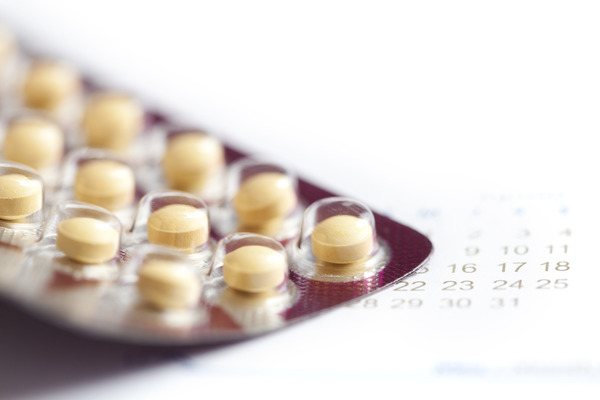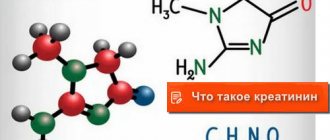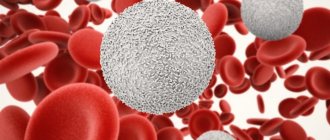- Interpretation of test results
- AMH (anti-Mullerian hormone): norm and deviations
To assess the state of the ovarian reserve, several tests are usually prescribed, including an AMH (anti-Mullerian hormone) test.
It is better to take the test in a specialized clinic, since the patient will immediately be able to get a consultation with a fertility specialist who will correctly interpret the results obtained and give the necessary recommendations.
Let's find out what the role of AMH is in the body, how its assessment helps determine a woman's reproductive potential and why you shouldn't try to decipher the test results yourself.
What is anti-Mullerian hormone?
Anti-Mullerian hormone (AMH, AMH, MIS, Mullerian inhibitory substance) is a biologically active substance that regulates reproductive function and also plays an important role in the embryonic period and during human puberty.
Takes part in the differentiation of the sex gonads and the rudiments of the internal genital organs. AMH is produced by the Sertoli cells of the testis in men and by the granulosa cells of the ovary in women during the third trimester of pregnancy.
In men, the highest concentration of AMH is observed during fetal development, as it regulates the formation of male genital organs. Then the concentration gradually decreases. In women, the hormone remains in the blood from birth until menopause. The maximum level of AMH is observed in 20-30 years, then its amount begins to decrease, and after menopause the production of this hormone stops.
What is Müllerian duct?
The Müllerian duct is a paired canal in the structure of the embryo from which the female genital organs and part of the male genitals are formed. It is formed at the end of the second month of intrauterine development. This structure was first described by Johann Muller in the first half of the 19th century.
Initially, the Müllerian duct is formed in embryos of both sexes. However, in male embryos it is inhibited by the action of a certain active substance, which is called anti-Müllerian hormone or Müllerian inhibitory substance¹.
The role of anti-Mullerian hormone in adults
In the female body, anti-Mullerian hormone is responsible for the maturation of follicles, their selection for ovulation and sensitivity to follicle-stimulating hormone (FSH). Thus, its activity ensures the maturation and ovulation of one of the ovarian follicles during each menstrual cycle. And since the level of AMH in the blood directly depends on the number of maturing follicles, it is an excellent marker of the functional reserve of the ovary and the possibility of conceiving a child.
In the body of an adult man, AMH regulates the production of male sex hormones - androgens. Moreover, it is considered a more accurate method of differentiation between variants of azoospermia (lack of sperm in the ejaculate) than FSH.
Figure 1. Ovarian reserve. Chart: Wikipedia (Public Domain)
Is it possible to perform IVF with low AMH?

If the analysis shows a low AMH content, this is not a contraindication for IVF. The procedure is carried out, but in parallel, intensive hormone therapy is used, aimed at maximizing the production of eggs. Increased dosages of hormones are prescribed. There is no need to be afraid of complications, but the woman should always be under the supervision of the attending physician and undergo an ultrasound scan.
If the therapy does not have the desired effect on the functioning of the ovaries, based on the patient’s age, the program is adjusted until an effect is obtained. If stimulation is successful, the doctor proceeds to the further stages of IVF - puncture of the ovaries and fertilization of the eggs. After 3-5 days after fertilization, when the egg begins to actively divide, the embryos are implanted into the uterus.
Over the next few weeks, the patient is under the supervision of a reproductive specialist who monitors the survival of the embryo and the patient’s condition. If the procedure was successful, there are no deviations, the pregnant woman is transferred to the antenatal clinic.
Indications for anti-Mullerian hormone testing
Measurement of the level of anti-Mullerian hormone is carried out during pregnancy planning, as well as in case of pathologies of sexual development. Most often, this analysis is prescribed by pediatricians, endocrinologists, urologists, gynecologists and geneticists.
The main indications for the test are²:
- Assessment of the functional reserve of the ovaries, which makes it possible to determine a woman’s fertility and predict the timing of transition to menopause.
- Determination of the body's response to stimulation of ovulation during in vitro fertilization (IVF) and during treatment of female infertility. The analysis is also used in cases of unsuccessful IVF attempts in history.
- Suspicion of the development of ovarian and testicular tumors, malignant neoplasms of Sertoli cells, monitoring the effectiveness of therapy.
- Diagnosis of persistent Müllerian duct syndrome, as well as differentiation of cryptorchidism and anorchia.
- Search for the causes of disorders of sexual differentiation (hermaphroditism) and male infertility.
- The presence of signs of high estrogen levels in women (manifested by uterine bleeding) and in men (accompanied by gynecomastia).
Indications for use
1. Among women:
study of the ovarian reserve as part of the diagnosis of the causes of ovulatory dysfunction, causes of subfertility and infertility.
Additional research for diagnosing PCOS. Diagnosis and control of treatment of granulosa cell tumors of the ovary. Diagnosis of premature ovarian failure (primary, iatrogenic). 2. In men:
assessment of male sexual function at different age periods.
Diagnosis of the causes of infertility in men. Diagnosis of persistent Müllerian duct syndrome (PMDS). Monitoring the effectiveness of antiandrogen therapy. 3. In children and adolescents: in
the detection of premature or delayed puberty. Differential diagnosis of cryptorchidism and anorchism. Differential diagnosis of intersex conditions.
Preparing for the test
AMH levels are measured using chemiluminescence immunoassay. The patient's venous blood is used as biological material for research.
You can take an AMH test on any day of the menstrual cycle. Photo: kukuruzaphoto / freepik.com
As a rule, no specific preparation for analysis is required - it provides basic rules and requirements that are used for most laboratory diagnostic methods. These include:
- Avoid eating at least 8 hours before blood collection.
- Avoid overeating and drinking alcohol the night before the test. It is also recommended to refrain from eating fatty, fried foods.
- Stop smoking at least 60 minutes before the test.
- Limit intense physical activity, stress and emotional stress the day before the test.
- Stop taking hormonal medications 48 hours before the test.
What is the preparation process?
Most of those who are prescribed such a procedure are quite naturally interested in how to prepare for the AMH test correctly. It must be said that the preparation process itself is not particularly complicated, but it still requires the implementation of some recommendations, which need to be discussed separately:
- in the previous three days, it is imperative to avoid excessive physical activity, not to abuse tobacco and alcohol, and it is also advisable to remove yourself from stress and unnecessary emotions
- If you have recently had the flu or a viral disease, the test should be postponed
- on the day of your visit to the laboratory, refuse to take liquids and food in the morning
The most “fertile” time to undergo the research procedure, according to experts, is the first half of the day, before 14.00.
Norms for men and women
Venous blood anti-Mullerian hormone levels are measured in nanograms per milliliter (Ng/ml). Normal values depend on a number of parameters - age for an adult or stage of puberty according to Tanner for children (Fig. 2), equipment and reagents that are used in a particular laboratory.
Figure 2. Tanner Puberty Scale. Image: M.Komorniczak, polish wikipedist / Wikipedia (CC BY-SA 3.0)
The average values of normal hormone concentrations in the blood for women are 1.0-2.5 ng/ml, for men – 0.49-5.98 ng/ml³.
More precise data is given in Table 1. In most cases, the norm value is indicated on the form next to the result obtained. Table 1. Anti-Mullerian hormone levels for children, men and women
| Floor | Age (years) / Tanner stage | Reference values, ng/ml |
| Male | ≤ 60 days | 15,11 — 266,59 |
| Stage 1 | 4,95 — 144,48 | |
| Stage 2 | 5,02 — 140,06 | |
| Stage 3 | 2,61 — 75,9 | |
| Stage 4 | 0,43 — 20,14 | |
| Stage 5 | 1,95 — 21,2 | |
| > 18 | 0,73 — 16,05 | |
| Female | ≤ 60 days | < 3,39 |
| 18-26 | 0,96 — 13,34 | |
| 26-31 | 0,17 — 7,37 | |
| 31-36 | 0,07 — 7,35 | |
| 36-41 | 0,03 — 7,15 | |
| 41-46 | 0 — 3,27 | |
| > 46 | 0 — 1,15 |
What can affect the result?
The phase of the menstrual cycle does not distort the meaning of the analysis, so this study can be taken at any time.
However, taking hormonal contraceptives may affect the data obtained. Therefore, it is important to consult a doctor about this and, if possible, first interrupt therapy. The following factors can also affect AMH levels in the blood:
- Overweight and obesity.
- Impaired glucose tolerance and diabetes mellitus.
- Deficiency or elevated levels of vitamin D in the blood.
- Race.
- Strong physical and psycho-emotional stress
Features of the compulsory medical insurance procedure
The procedure for obtaining a “Referral for IVF under Compulsory Medical Insurance” is standard and varies slightly depending on the region. Most importantly, in some regions, patient selection criteria are applied depending on AMH numbers. This is explained as follows:
It is well known that with age, the ovarian reserve decreases due to its consumption during the reproductive period. The age at which the decline becomes critical depends on many circumstances: the initial reserve, ovarian surgery, and hereditary factors. And, when a critical decrease in ovarian reserve is achieved, pregnancy using one’s own egg becomes problematic for a woman. This (not age) is what the restrictions set in some regions are based on. In other words, patients are selected based not on age, but on AMH numbers. And an effective way to “get” a referral for IVF under compulsory medical insurance is to undergo a consultation with a fertility specialist at the clinic where IVF was planned and develop a treatment plan. Clinics can confirm consent to accept a patient with some kind of “letter of guarantee” (it is not required as a standard).
Causes of elevated AMH
The main causes of elevated levels of anti-Mullerian hormone in the blood in men include:
- Delayed sexual development.
- Hormonal therapy with antiandrogen drugs.
- Defects in androgen synthesis.
- Resistance (immunity) to androgens.
- Testicular cancer.
- Cryptorchidism.
In women, a high level of AMH may indicate the following pathologies:
- Hormonal infertility.
- Malignant, hormonally active ovarian tumors.
- Polycystic ovary syndrome (PCOS).
Causes of low AMH
A decrease in the level of AMH in the blood in men may be due to the following pathological changes:
- In adolescence – premature puberty.
- Excessive levels of male sex hormones.
- Anorchism is a developmental anomaly manifested by the complete absence of testicles.
- Non-obstructive azoospermia is a disease leading to the absence of sperm due to impaired synthesis in the testicles.
- Persistent Müllerian duct syndrome is a genetic disease in which a man may develop a uterus, fallopian tubes, and processus vaginalis of the urogenital sinus.
In women, anti-Mullerian hormone deficiency is often associated with the following changes in the body:
- Overweight and obesity.
- Low functional reserve of the ovaries, early onset of menopause.
- Ovarian failure, including after chemotherapy or radiation therapy for cancer of the female genital organs, surgical interventions on them.
- Menopause. In this case, the AMH level can reach zero¹.
Clinical relevance
1. An important component of most forms of premature ovarian failure.2. Assessment of ovarian reserve as part of the examination for infertility.3. Forecasting the effectiveness of ovulation stimulation and ovarian hyperstimulation syndrome in IVF cycles.4. An additional test in the diagnosis of PCOS (especially normoandrogenic forms).5. Examination of children with disorders of puberty, assessment of testicular function in infants and children.6. Diagnosis and treatment monitoring of patients with ovarian granulosa cell tumors.7. Component of diagnosing infertility in men.
Effect on pregnancy
AMH is often used to determine a woman's fertility—her ability to become pregnant. At the same time, low rates indicate a decrease in the functional reserve of the ovaries and a low probability of pregnancy.
If the level of anti-Mullerian hormone is below 1 ng/ml, the possibility of becoming pregnant still remains. The critical value is considered to be 0.2 ng/ml, at which there is practically no chance of getting pregnant on your own. But even with low AMH levels, it is possible to successfully conceive a child using IVF.
In the range of 0.2-1 ng/ml, an additional measurement of the level of follicle-stimulating hormone is carried out, since at its low values the likelihood of pregnancy remains.
A low AMH level indicates a low chance of a natural pregnancy. Photo: psodaz / freepik.com
Interpretation of test results
It should immediately be noted that only a doctor can correctly interpret the results obtained.
Often, women with low AMH levels come to the conclusion that pregnancy in their case is possible only with the use of donor eggs. But this is not always the case. It is necessary to understand that to complete the picture and provide an objective prognosis, the doctor also needs other indicators, in particular:
- FSH (follicle-stimulating hormone, which is produced by the pituitary gland);
- LH (luteinizing hormone);
- inhibin B (hormone that suppresses FSH synthesis);
- the number of antral follicles, which is determined during an ultrasound examination of the pelvic organs.
In addition, another prognostic criterion is the woman’s age. Naturally, all other things being equal, the chance of becoming pregnant with one’s own cell at the same AMH level is higher in a younger patient.
Therefore, you should never self-diagnose before talking to your doctor.
Methods for correcting anti-Mullerian hormone levels
If deviations from the norm are detected, a person is examined to look for the most likely diseases and disorders that can affect the level of AMH in the blood.
If fluctuations in its level are associated with concomitant diseases, their treatment can normalize the level of the hormone in the blood. For example, an increase in AMH levels caused by hormone-producing tumors of the ovaries or testicles is corrected by removing the tumor. However, during chemotherapy, damage to the glands is possible, which will lead to a shift in the indicators in the other direction.
With low levels of anti-Mullerian hormone and infertility, its correction is also ineffective, since these changes mean depletion of the ovaries. However, in some cases, when AMH is reduced, hormone replacement therapy may be used to delay the onset of menopause and preserve reproductive function.
At the moment, only a few substances are known that can increase AMH levels. These include¹:
- Vitamin D3. Stimulates the production of Müller inhibitory substance by granulosa cells.
- Dehydroepiandrosterone (DHEA). Increases AMH levels by increasing the number of follicles, as well as stimulating the production of the hormone itself.
Expert opinion of a doctor
Barakhoeva Zarema Bekhanovna
Reproductologist, obstetrician-gynecologist, Ph.D.
The main treatment is aimed at eliminating the causes of hormonal imbalance. In addition to drug therapy, women are advised to monitor their weight, since a relationship has been identified between obesity and an increase in the hormonal substance, although its level can be high with normal weight. Individual recommendations are given on diet, physical work and rest.
Anti-Mullerian hormone is an innovative way to determine the ovarian reserve, the use of which is especially useful in the pathology of the female reproductive glands, which allows women to determine the duration of their reproductive life. This analysis is a more reliable marker of ovarian reserve than the FSH determination, which has been used over the past few decades. If we talk about the cost of testing for anti-Mullerian hormone, the price of the analysis ranges from 2,000 rubles. Elevated AMH is not a reason to despair for women who want to become a mother. You should not delay visiting a doctor and trust experienced specialists who know exactly how to solve this problem, correct hormone levels, restore fertility, and avoid negative consequences.






